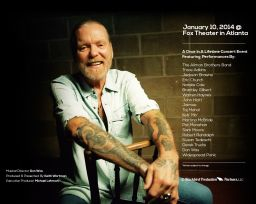Forum Replies Created
-
We can fill a website with great Billy Preston performances but it’s hard to find one more impressive than this one.
“If I’m going to hell, I’m going there playing the piano”, Jerry Lee Lewis. “Whole Lotta Shakin’ Going On”.
?t=7
Chuck Berry’s piano player, Johnnie Johnson could boogie and play four-to-the-floor better than anyone. Here he is playing “Johnnie’s Boogie”.
The groove chart is the fastest way to learn the essence of the song without getting bogged down reading notes. The groove charts are also great for comping with a band. The different notation used in the groove charts suggests that you play the duration of the note written on the page but you can choose to play any note from the chord or scale that sounds good to you. For example, if the note is a half note (an open diamond with a stem) you could play any note from the chord, or the chord itself, for two counts.
Approach learning the groove chart by first learning all of the chords. It’s best to learn to play all the inversions of the chords with each hand. Once you’ve mastered the chords, begin playing the left hand rhythm. Begin with the root note of the chord, then octaves, then the root-fifth( ie for C chord play C and G), and then add more notes as you like. Once you are comfortable with the left hand, play the chords in the right hand using the rhythm as written. You can play the chord in any inversion or just one note of the chord and add the melody of the song if you like.
(Note: If the chord is written C/E you would play the C chord with the right hand over an E in the left hand).
Matthew ( rocker2) provided a really useful comment on the “Such a Night” piano lesson that provides some good ideas on what you can do with the left hand. You might want to check that out.
You might want to go to the Tools & Resources section of the site to try out a variety of the piano rhythms and grooves.
Ben’s advice on understanding how a drummer plays a drumset is spot on. If you follow his advice, ie have the high-hat play 1/8 notes, the bass on the 1 and 3 and the snare on 2 and 4 you have a very basic cookbook that should get you started for most songs. Begin there and once you get the hang of it you can start experimenting with other instruments and timings.
There are also a lot of good smartphone drumkit apps that you can use.
The Stones tour is back on. They are currently in Europe. Here is a link to the concert dates:
There is no right or wrong way of creating the rhythms in the groove charts. The true test is if it sounds good when you play along with the song. But there are techniques that will help you develop the groove. Listen to the original recording and for the left hand rhythm try to tap on your knees what the kick drum or the bass guitar is playing. If it is a song with a strong piano groove( i.e. Tipitina, What’d I Say, Hey Now) then try tapping that out. One of these should help give you the left hand rhythm. For the right hand, try to tap out either what the rhythm guitar is playing or the right hand of the keyboard is playing. These should be your starting points. If you are creating a groove chart to play along with a band then simplify the rhythm as much as possible without losing the feel of the song. When playing with a band you don’t want your groove to be too complicated or it might interfere with the bass and rhythm section. If you are creating a groove chart to accompany a singer then you might want to use a more rhythmic pattern.
At irocku, we try to give our students a variety of different rhythm/comping styles through the groove charts. A good thing to do might be to try some of those rhythms under different songs and see what works. The more you try and explore, the better idea you’ll have on what to do. You’ll begin to develop an “intuition”.
Take it section by section. Most common tunes have at least some 8th note subdivisions, and some have 16th note subdivisions. Using IROCKU from Level 4-7 gradually schools you on how to play 8th, and then gradually 16th note subdivisions in any combination.
So, tap or foot-tap the “beat” of the song. For example the “beat” of the intro for Stairway To Heaven 4/4. Every chord gets two “stomps”. Every chord is also plucked in 8th notes, which is “one-and-two-and”, each syllable landing on one guitar pluck. If you can stomp 1-2-3-4 and count 8th notes as described above, you’re well on your way. Try it and let us know how it goes!
Lot’s of people have asked “what’s the best way to learn”? Don’t stress about a right or wrong way to learn. The only right way for you is the way you enjoy the most. Here is a sampling of the different ways we’ve seen people learn. Pick whichever one works for you. Better yet, invent your own.
1. Some students only learn the groove charts. They practice the scales and chords associated with the song and then play the song however they choose by following the chord progression and working off the rhythm pattern of the groove chart. According to Chuck this is how most rock bands learn. Most are not classically trained but instead only work with chords and riffs to piece together songs. If you are classically trained you might feel guilty playing this way because you feel like you are missing something. But, heck, if it’s fun who cares.
2. Some students religiously learn all the groove charts, exercises, improvs, and lessons for a complete level( or a least a half dozen of the lessons) before moving on to the next level. The advantage to this approach is you are building a very strong foundation to grow from; the disadvantage is that it requires discipline and time. This is how most sessions guys probably learned to play.
3. Some students only learn to play the song ( ie the Lesson). They start at one level and gradually work their way up the levels. We have yet to find a student make it to a level 7 this way but a ton of students have worked their way up to level 5. FYI- level 5 is the level that most amateur musicians play when they perform with a band so there is nothing wrong with stopping at level 5. Some supplement the level 5s with the exercises and improvs of the level 6 and 7s.
4. Some students only learn the improvs. Lots of people just want to learn licks so they pickup the improvs and learn them in every key. They can then apply them to any song they want.
Bottom line is you should step back and experiment with how you learn best and what enjoy the most.
For those of us attending the New Orleans Jazz festival this year, we’re in for a special treat. Chuck will be joining a tribute to Dr. John on May 3 at the Saenger Theater.
“I am extremely excited about participating in the Tribute to Dr. John in New Orleans on May 3, 2014 at the Saenger Theater! Many of you know that I played with him back in 1971 and 1972 before I joined The Allman Brothers Band, and I am thrilled to help celebrate my old boss, mentor and friend, Mac Rebbennack…Dr. John.” – Chuck
Nikalette- Welcome back. Hopefully you’ve inspired others to overcome their challenges and keep playing. BTW- Dr. John only plays with 9 fingers, so you might have one up on him!
We can’t argue with Aretha and Lady Gaga. Check out this Aretha video with the Stones. Chuck was gracious enough to step down from the Grand Piano for the Queen of Soul!
Great point! Very few people can master all of the songs in our membership in a year. That’s more like a lifetime achievement. Picking 6 songs and making them your own would be a pretty lofty accomplishment for most of us.
Looks like it’s time to add keys to your arsenal of instruments. Enjoy!
 Elton John, Billy Joel, and Leon Russell are on top of everyone’s list of great rock keyboardists but, man, Ben Folds deserves to be there also. Most rock keyboardists are musical athletes with their complex rhythms and syncopations. If so, Ben Folds is rock’s Jim Thorpe. He does it all. He plays the bass line, the drum line, the melody, and the rhythm all on the keys. A few years back, Chuck was recording in Ben Fold’s studio and Chuck was blown away. Ben Folds adds a dimension to the keyboard that no other rock keyboardist before him has done. “Rockin the Suburbs” might be our most difficult piece because the right hand melody is so tightly intertwined with the left hand groove.
Elton John, Billy Joel, and Leon Russell are on top of everyone’s list of great rock keyboardists but, man, Ben Folds deserves to be there also. Most rock keyboardists are musical athletes with their complex rhythms and syncopations. If so, Ben Folds is rock’s Jim Thorpe. He does it all. He plays the bass line, the drum line, the melody, and the rhythm all on the keys. A few years back, Chuck was recording in Ben Fold’s studio and Chuck was blown away. Ben Folds adds a dimension to the keyboard that no other rock keyboardist before him has done. “Rockin the Suburbs” might be our most difficult piece because the right hand melody is so tightly intertwined with the left hand groove. Glad you found us and Welcome! You’re in good company. About half of the IROCKUers are 40+ rockers who are dusting off the keys. Too much music, too little time! Enjoy!
At 8 p.m. Jan. 18, “Celebrating Georgia with Chuck Leavell and Friends” will be presented at Atlanta Symphony Hall at the Woodruff Arts Center. Chuck will be joined by Gregg Allman, Randall Bramblett and others will be on hand for the honors.
We’re lovin’ this discussion. We’ll try to get licensing rights for each of these great keyboardists and crank out some lessons. No guarantees- the licensing process is slow and cumbersome even with Chuck’s connections.
Chuck will join rock superstars, Jan 10 at Fox Theatre in Atlanta to tribute Gregg Allman.
Others will include Vince Gill, Dr. John, Jackson Browne, Natalie Cole, Trace Adkins, Martina McBride, Pat Monahan, Widespread Panic, Derek Trucks, Susan Tedeschi, Robert Randolph and many others, including, of course The Allman Brothers. Sounds awesome!

Moonhanger and The Big House Presents
Chuck Leavell & Friends
Randall Bramblett
Saturday Dec 21, 2013
Doors: 7:00 PM
Show: 8:00 PM
Minors Under 21 with Parent or Legal Guardian
$35 – $62.50
Cox Capitol Theatre
382 Second Street
Macon, GAChuck Leavell and Friends
John Keane and Deja Vu
Dec 20, 2013 at 8:00 PM
Doors open 7:00 PM
All Ages Show!Chuck Leavell has been pleasing the ears of music fans for more than 30 years now. His piano and keyboard work has been heard on the works of Eric Clapton, The Rolling Stones, The Black Crowes, George Harrison, The Allman Brothers Band, The Indigo Girls, Blues Traveler, Train, Montgomery-Gentry, Lee Ann Womack and many, many more. In addition to being a well established pianist/artist in the music industry, Leavell is also a published author, tree farmer, and keeps busy with his advocacy work on behalf of the environment.
Tommtt2: Welcome to IROCKU! We hope you enjoy the site. The Groove Charts require a knowledge of basic chords so we introduce them with the Level 3 lessons. If you are a beginner, you might want to go to the Tools and Resources link to learn the chords associated with whatever song you are learning. Keep rockin!
Level 5-6 is probably the right level for playing with a band. We’ve found that most players in bands use our level 5s when they perform and they supplement it with licks from the 6s and 7s. The levels 6 and 7s are challenging to play while keeping up with everything else you need to pay attention to when playing with others plus the left hand from those arrangements might get in the way of the rhythm section. You might want to focus on the groove charts when you are comping with the band and then supplement it with licks from the lessons, improvs, and exercises.
The Stones are mostly a guitar band but they do have some great keyboard songs. We’ve included many of them in our lessons. When playing the Stones consider how their keyboard style evolved. They started with Ian Stewart who was a boogie woogie piano player so work on songs like “Honky Tonk Women” and “Let it Bleed” to develop your boogie woogie chops. Nicky Hopkins was a great rhythm and groove player and he introduced many of the 16th note syncopated rhythms, such as you would find in the bridges on “Sympathy for the Devil” and “You Can’t Always Get What You Want”. He also did a lot of Sus chord substitutions so get them down. And Billy Preston introduced a touch of soul to the keyboards so you should work on “Shine A Light” and work on moving between the I and IV chords. And finally, Chuck brings all their styles together and adds masterful solos on top. This will take the most time to develop because you’ll need to make the solos ‘your own’ if you want to perform them with a band. Playing the notes of a solo that someone else performed just never quite sounds the same. Pick any of our songs and work on the improvs but be sure to experiment and develop your own licks. You can use the IROCKU improvs as starting points.
Hope this helps!!!! Keep rockin!
 We wouldn’t have groove without Professor Longhair. When we created irocku Professor Longhair was on the top of our list. Professor Longhair was a pioneer of rock piano mixing boogie-woogie, samba, calypso, jazz and rhythm and blues into his own unique style. His influence and style left an indelible imprint on the pioneers of rock and roll like; Fat’s Domino, Jerry Lee Lewis, Little Richard and Elvis.
We wouldn’t have groove without Professor Longhair. When we created irocku Professor Longhair was on the top of our list. Professor Longhair was a pioneer of rock piano mixing boogie-woogie, samba, calypso, jazz and rhythm and blues into his own unique style. His influence and style left an indelible imprint on the pioneers of rock and roll like; Fat’s Domino, Jerry Lee Lewis, Little Richard and Elvis.- This reply was modified 11 years, 3 months ago by irocku.







